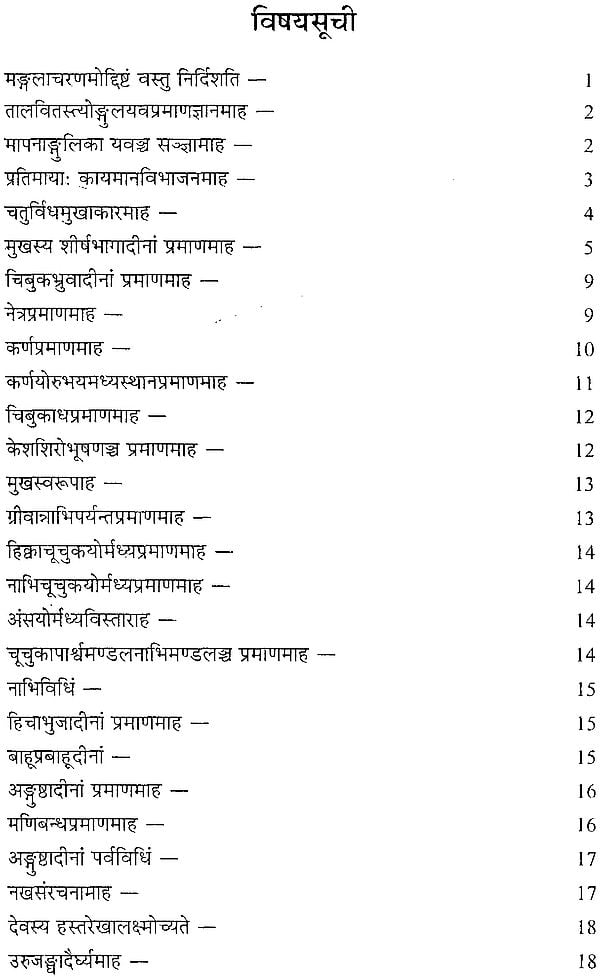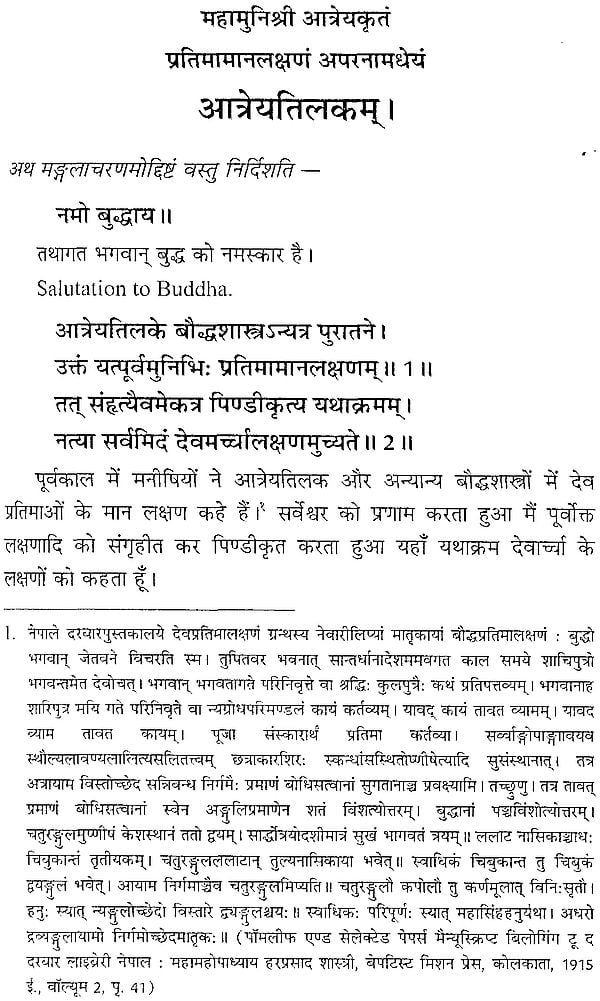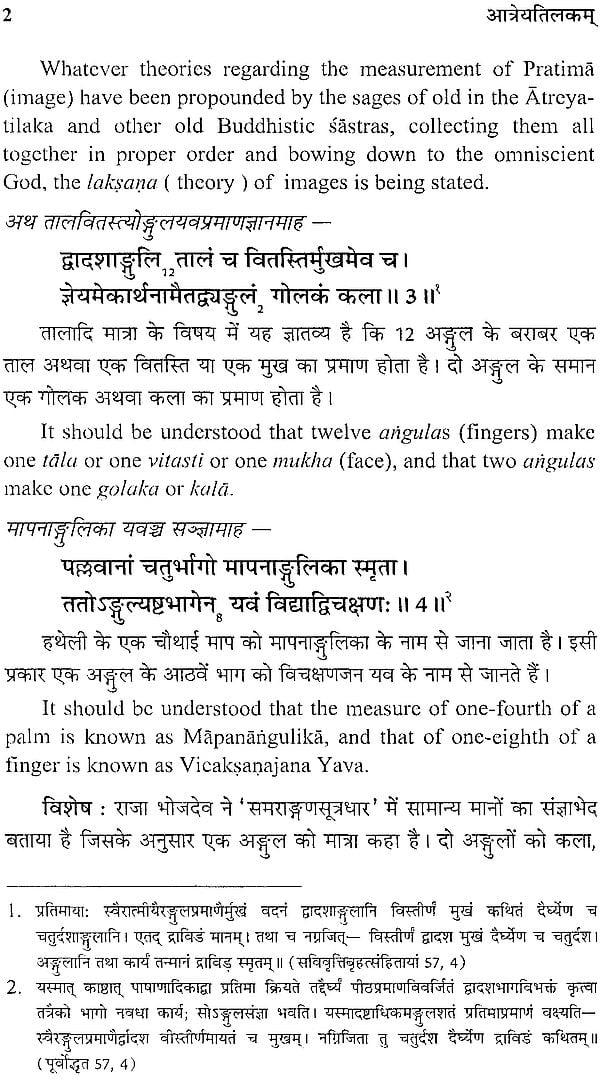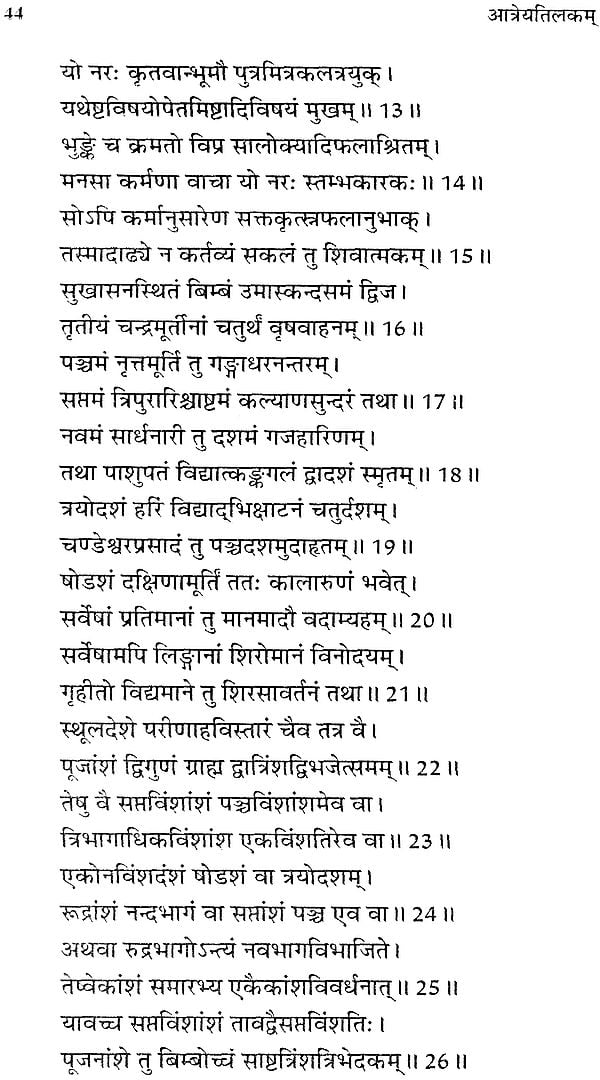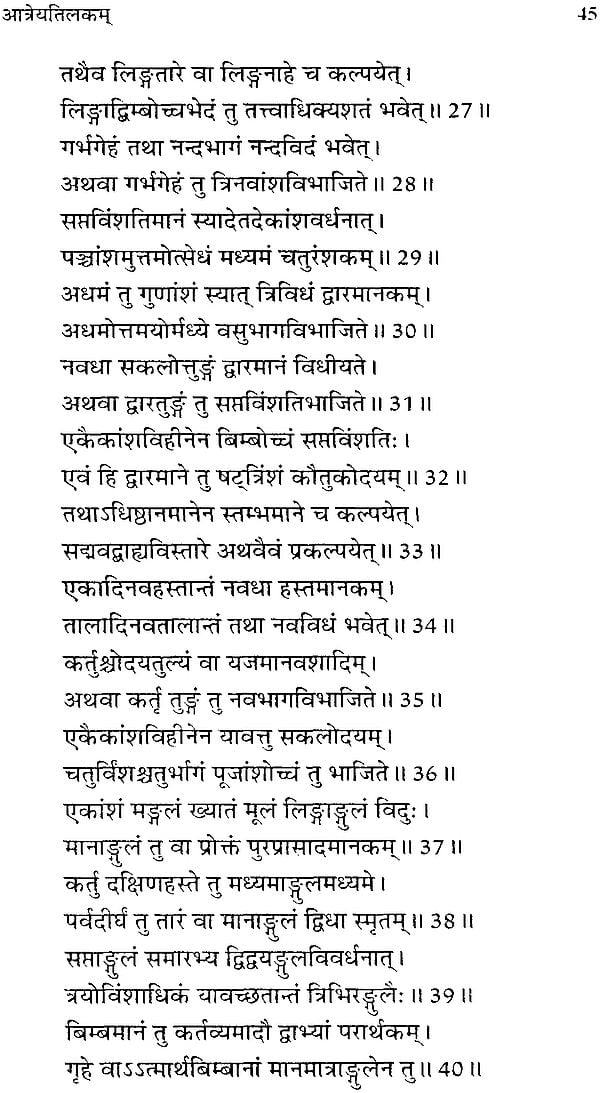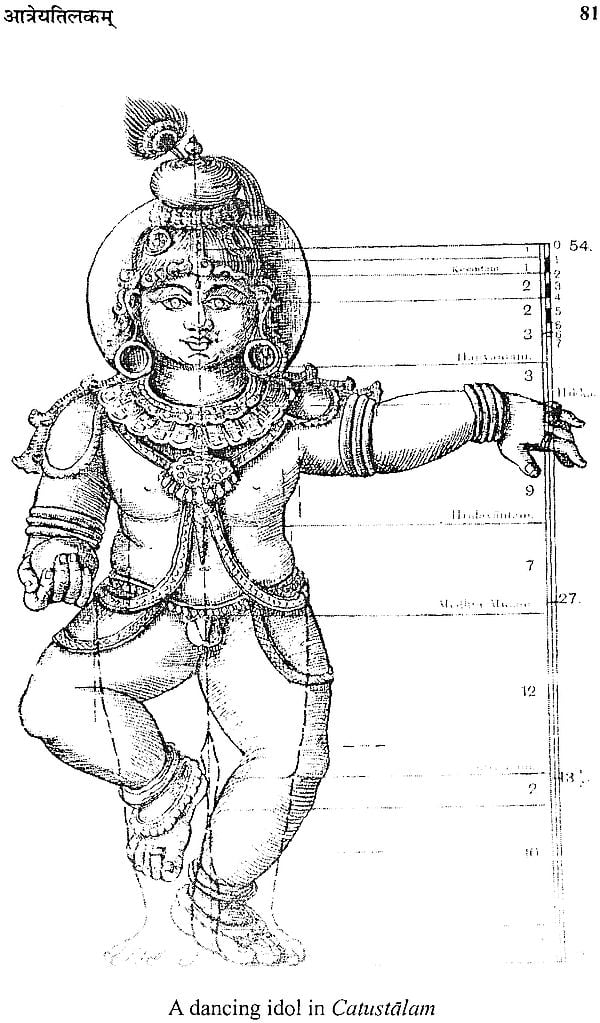
Atreya-Tilakam : An Indian Treatise on the Principles of Image Making
Book Specification
| Item Code: | NZA090 |
| Author: | Dr. Shri Krishna |
| Publisher: | Parimal Publication Pvt. Ltd. |
| Language: | Sanskrit Text with English Translation |
| Edition: | 2013 |
| ISBN: | 9788171104208 |
| Pages: | 126 (22 B/W Illustrations) |
| Cover: | Hardcover |
| Other Details | 9.0 inch X 6.0 inch |
| Weight | 260 gm |
Book Description
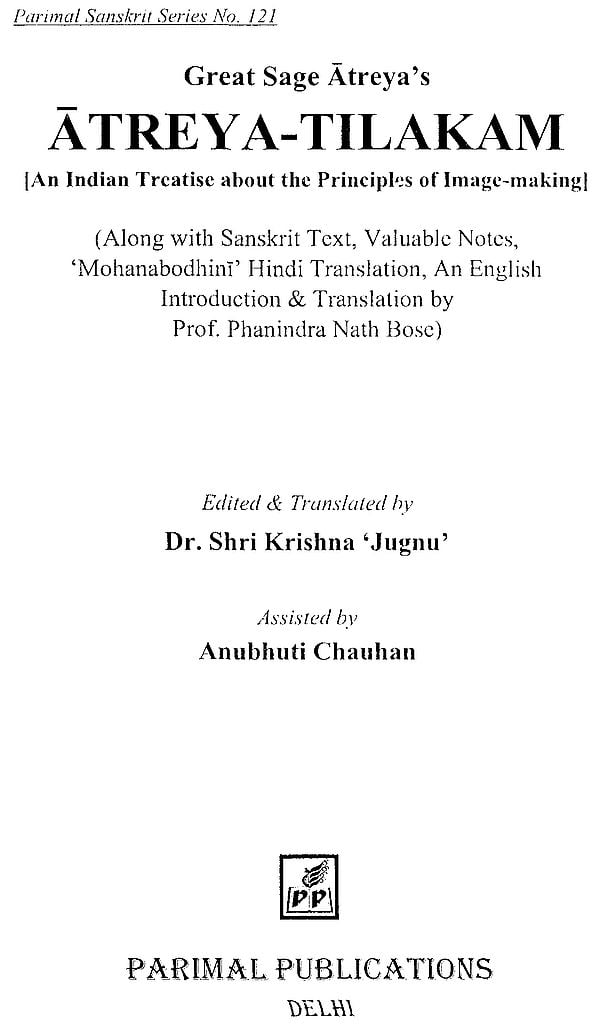
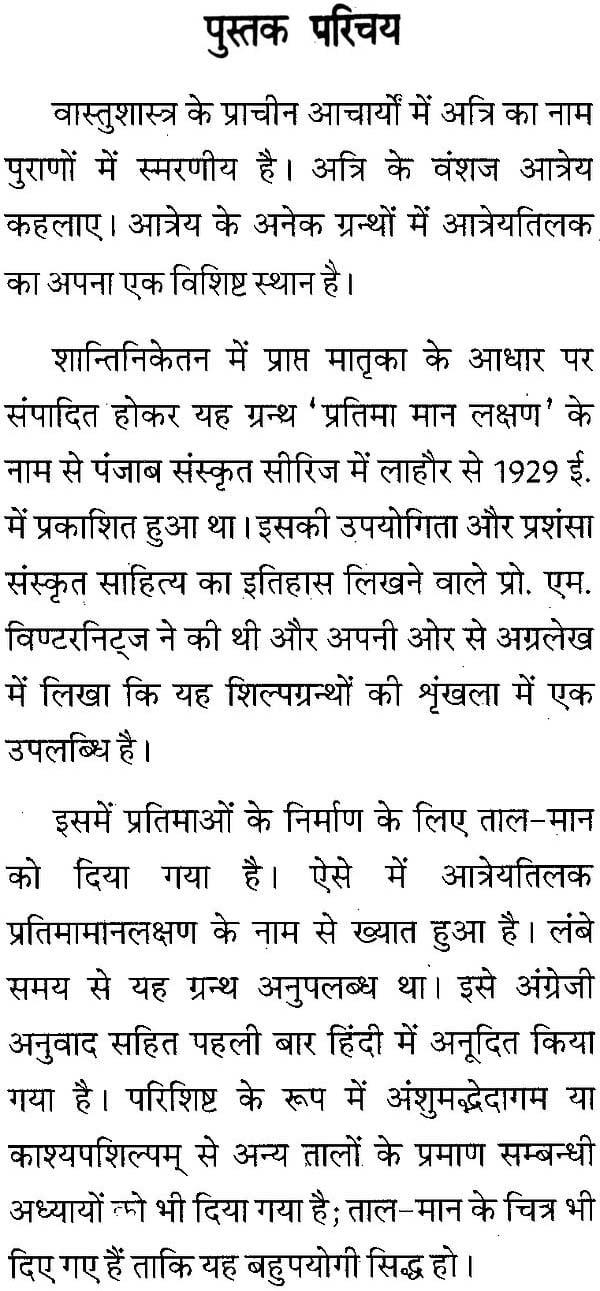
Forword
For one who has had the good fortune to co-operate ‘-7’ith the Poet Rabindra Nath Tagore, the Founder-President of Visvabharati, it is no small satisfaction to see how this splendid institution is growing and Santiniketan is generally becoming an important centre of learning in India. During my stay at Santiniketan in 1922/23, 1 could watch with pleasure one batch of Sanskrit Mss. after another coming into the library. At present this collection of Mss. in the Visvabharati Library is one of the treasures of the institution and it includes a good number of rare manuscripts.
I am happy to be able to introduce to Sanskrit scholars the edition princeps of text which is based on an unique manuscript belonging to the Visvabharati collection, moreover of a text belonging to the silpasastra literature, of which so little has become known hitherto. In fact, until a few years ago, we hardly knew anything of the Indian i1paastra. In my Geschichle dci !ndisc-hen Liueratur, Vol, III, p. 533 f., I could only refer to it in a short paragraph, relying on an article in Goldstucker’s ‘Literary Remains’, some reports of Ms., and the Vastuvidya, which had been published in 191 3 by Ganapati sastri.
Thanks to the labours of the late Mm. Ganapati sastri and other Indian scholars we now possess editions of several works on Silpasastra, and recently Professor Phanindra Nath Bose has published an interesting book on the Principles of Indian silpasatra to which is appended the text of the Mayaastra, which has been known (or rather hardly known) only from an edition in Telgu characters, printed in 1916.
Professor Bose, who was among the ablest research students in my class at Santiniketan, is also the learned editor of this new silpasastra text — the Pratima-mana-laksana (Atreyatilaka). The Ms. on wluch the edition is based, was presented to the Visvahharati Library by the Nepal Durabar. The book is included in the Tibetan Tanjur and the editor has added the Tibetan version of the text and used it for the restoration of the Sanskrit readings where the Ms. Is faulty. I hope professor bose will continue his work in this line and also give us editions of the other Silpasastra text which the Visavbharti Library Possesses manuscripts.
This critical edition of Patima mana laksanam (Atryatilaka) was prepared in the Visvabharati Shantinetan with which I was associated for a period extending from 1921 to 1927. I found the Ms. Of Pratima mana laksanam in the rich collection of Sanskrit Mss. Of the Visvabharati Library. I used the Tibetan version of the same from the visvabharati Tanjur collection.
The discovery of this well known work is very important to the history of Indian Silpa literature. I had referred to this work in my Principles of Indian Silpasatra in which quotations from this work appeared for the first time.
Dr. Winternitz was kind enough to write a foreword to this book, for which I am grateful to him for his constant encouragement in carrying on my work in the Sipasastra, A branch of India literature that has been neglected too long. I am rather sorry that the publication of this work was delayed for more than two years, owing to many unforeseen circumstances.
I take this opportunity of expressing my thanks to my learned friend pandita Vidhusekhara Sastri of Visvabharati who helped me with his valuable suggestions and advice.
The wide-spread prevalence of image-making in different f India even at the present day, leads us naturally to suspect the existence of numerous Siipasasias regarding this branch of art in ancient times. The artists and sculptors of Orissa of South India still follow some texts (though corrupt in v cases) which lay down the measurements of images from bdian point of view. Until these manuals are collected and ably edited, we cannot expect to have the complete Indian ilpa The books like Mai’ainatain, Silparatnani, Vastuvidya Manusyalayacandrika which have recently been discovered, do not treat eat of the art of image—making. A few chapters on Pratimaor the theory of images arc found in books like sukranti Brhatsamhits Matsyapuranam and Agnipuranam. these are, however, only fragments; and the original book of F--;Jia4a/ccana has not yet been discovered, though its existence was never questioned. It was, therefore, thought that the original Sanskrit version must have been lost to us and we never to turn to the Tibetan translation for its restoration in Snskbt. When in 1913, the German scholar Laufer brought out Tibetan version of Citra-laksana with its German translation it was pointed out that the Pratima-laksana like citra-laksana survives only in Tibetan translation. Not only (i) Pratma laksana but two other books like (ii) Dasa –tala-nyagrodha-parimandala-buddha-pratima-laksanaand (III) Sambuddha-bhasita-buddha-pratima-laksana-nama are also thought to be preserved only in Tibetan.
When, therefore, we heard from Dr. Sylvain Levi that a copy of Pratima-laksana Ms. in Sanskrit exists in Nepal Durbar library, we cherished a hope of being able to secure its copy. It was through the efforts of Dr. Rabindra Nath Tagore that the Sepal Durbar presented a few valuable Mss. to the Visvabharati Library. To our joy and surprise, we found among them all the three silpa Mss. Which were so long thought to have been lost to us. Of these Mss. We gave preference to pratima laksana.
